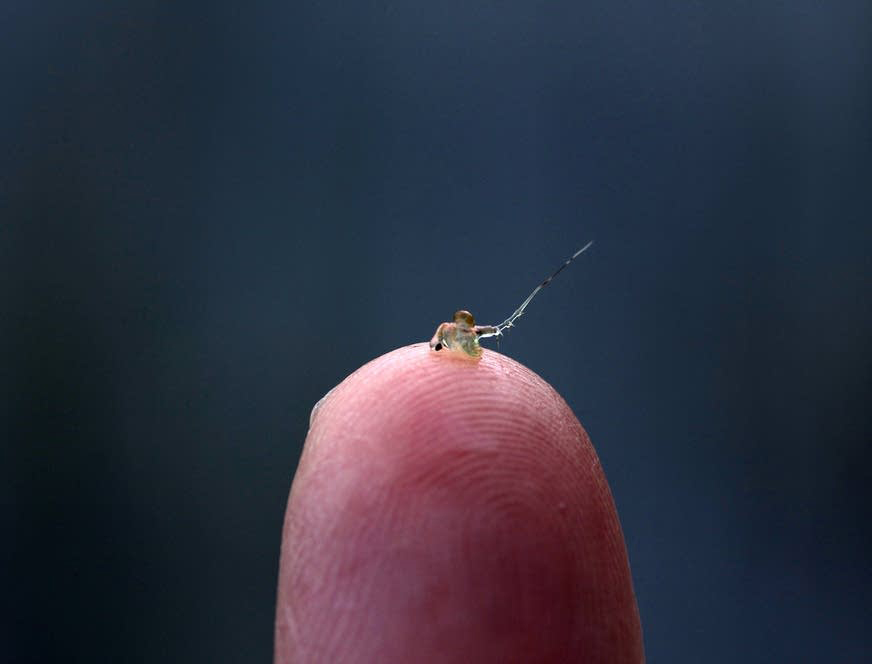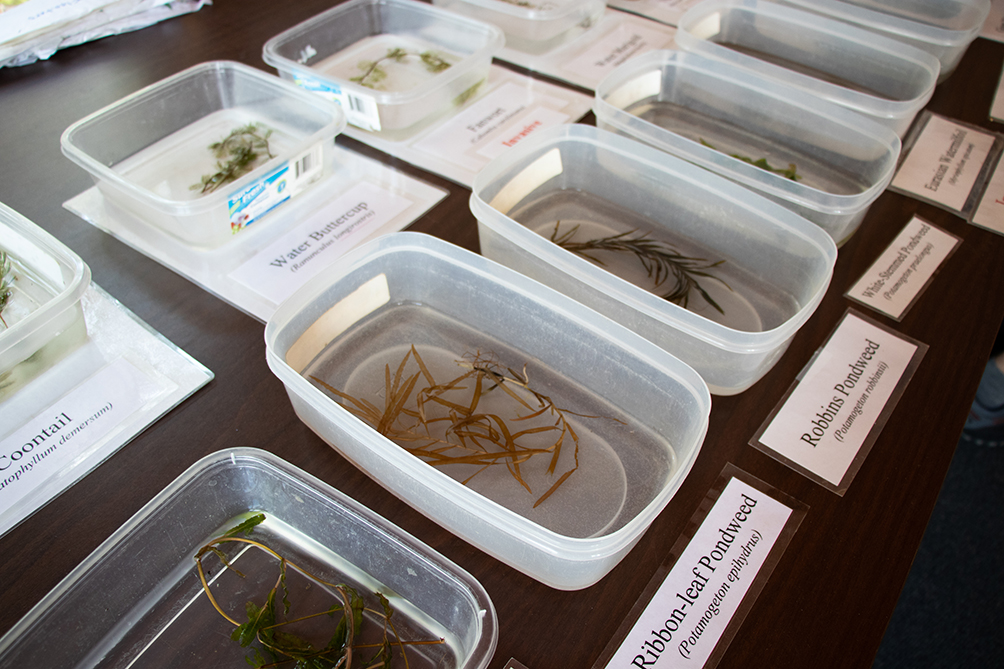
Invasive Species: A Midsummer Update
Friday, August 9, 2019
By: Julia Randall - Adirondack Council's Clarence Petty Intern
Twice a year, Adirondack stakeholders meet to discuss the current state of invasive species management in the Park. On July 22, Adirondack Park Invasive Plant Program (APIPP) partners convened for this year’s summer meeting at The Nature Conservancy’s Adirondack headquarters in Keene Valley. At the event, the Adirondack Council and other organizations from around the Park discussed past progress and desired ecological and legislative outcomes on invasive species.
By the numbers
In a comprehensive presentation, APIPP provided a snapshot of the current numbers on invasive species in the Park. As the numbers indicate, there is still work to be done:
- 105 out of 304 surveyed water-bodies have been invaded, but many more not surveyed are still at risk
- 9 water-bodies surveyed have 3 or more invasives
- 2 (Lake George and Lake Champlain) have 5 or more invasives
- 1,997 infestations are currently under management or have been successfully removed
- There are
- 2611 priority infestations
- 992 infestations under active management
- 760 survey areas with no invasives observed
- 245 locally eradicated infestations
- There are
Species to watch
By definition, invasive species are non-native plants or animals that cause harm to ecology, the economy and human health. In Lake Champlain, two very small invasive species are causing big problems: the spiny waterflea and the fishhook waterflea. There is no known method of management for these two species, which are native to Eurasia and can be imperceptible to the human eye at some stages of life. The two waterflea species pose significant threats to the ecology of Lake Champlain: waterfleas feed on native zooplankton, interfering with the food chain for the 90 native fish species and causing a serious decline in populations. The economic impacts are steep, as well: these species pose a threat to Lake Champlain’s highly popular bass fishing tournament, which brings thousands of tourists to the area and millions in tourism dollars annually.
 Spiny Waterflea
Spiny Waterflea
Photo: Donn Branstrator, University of Minnesota Duluth.
Changing course
On May 25, a new boat-washing station opened at the Adirondack Welcome Center along I-87, the Adirondack Northway, in Queensbury. While boats are encouraged to stop at this station, New York State’s current Invasive Species Law does not require them to do so. The law requires boaters take “reasonable precautions” to prevent the spread of invasive species. The Adirondack Council advocated for a mandatory boat-washing measure such as the program at Lake George which has prevented the introduction of any new aquatic invasives since 2014. Ultimately, that did not make it into this year’s law. However, the current law was temporarily renewed until June 2020 with commitments from legislative leaders to strengthen the measure in the coming year. The Adirondack Council has identified seven other states with model boat washing programs; we are optimistic that in the 2020 legislative session, lawmakers will enact stronger legislation to add New York to the list of states leading on invasive species prevention and management.
There are also several personnel changes ahead for APIPP, including the loss of APIPP Director Brendan Quirion and Adirondack Watershed Institute (AWI) Stewardship Director Eric Holmlund. Both Brendan and Eric received recognition and accolades from the many stakeholders in attendance, including representatives from the Department of Environmental Conservation (DEC), several Adirondack lake associations and the Adirondack Council.
Concurrently, APIPP will be implementing new changes over the next five years that will shape the Park’s ecology long into the future. In particular, APIPP will be developing a new priority-setting process for invasive species. The process will use predictive analysis to determine which areas are at the highest risk of invasion. For example, Adirondack waterbodies will be prioritized based on certain risk factors, such as being located close to the Northway or having a high population of game fish (a draw for tourism).

APIPP’s work is about the regrowth of native plants as well as the removal of invasive species. As such, APIPP plans to increase outcome monitoring -- ensuring that native species return once an infestation has been addressed.
New updates to NY iMapInvasives were also unveiled at the meeting, including the new capabilities of iMap3. NY iMapInvasives is an online invasives mapping and reporting platform which maintains current invasives data from all across New York State. iMap3 is the newest version of the software and contains several new tools that could usher in a new era of lake management in the Adrondacks. For instance, iMap has announced that it will make “backend” data accessible to groups interested in creating customizable web maps specific to a region or a species. Lake associations and other interested groups should contact Meg Wilkinson at imapinvasives@dec.ny.gov.
Ways to get involved
There are multiple ways to get involved in the fight against invasive species:
- Call and write your New York State legislators - Hold lawmakers accountable to their commitments to strengthen the current aquatic invasive species law. Stay tuned for Adirondack Council action alerts and help us advocate to preserve the pristine waters of the Adirondacks.
- Clean, Drain and Dry all boats and trailers before and after traveling to other waterbodies. Small species like the fishhook water flea can spread to other waterbodies on fishing equipment – be sure to change fishing lines and tackle before fishing in a different waterbody.
- Attend a training - A group of Adirondack Council Clarence Petty Interns recently had the opportunity to learn more about aquatic invasive species and how they affect the Park at a training sponsored by APIPP. The training, which took place in Lake Placid at the Mirror Lake Beach House, attracted attendees from a variety of Adirondack organizations, and from all over the Park. Find information about trainings here, and learn to identify aquatic and terrestrial invasive species for yourself.
- Become an iMap3 certified trainer - You can become a certified iMap3 trainer online or through in-person training. Learn more here.
- Get informed - For more information about invasive species affecting the Adirondack Park, visit APIPP’s website at adkinvasives.com or the Northeast Aquatic Nuisance Species (NEANS) Panel Online Guide to Aquatic Invasive Species in Northeastern North America at http://www.northeastans.org/online-guide/. To see and identify invasive species for yourself, visit the excellent invasives exhibit at ECHO, Leahy Center for Lake Champlain. For novel perspectives on the rhetoric we use to describe invasive species, see these articles in the Smithsonian and in Nature.

Julia Randall is from Albany, NY and graduated from Williams College this year with a degree in English. As a Clarence Petty Conservation Intern, she works on a variety of projects related to overuse and wilderness management, including a white paper that envisions an EV shuttle system in the Adirondack Park. An aspiring environmental lawyer, Julia is passionate about climate justice and getting the words right. In her free time, she enjoys hiking, making music, and frequenting Donnelley’s Ice Cream.




